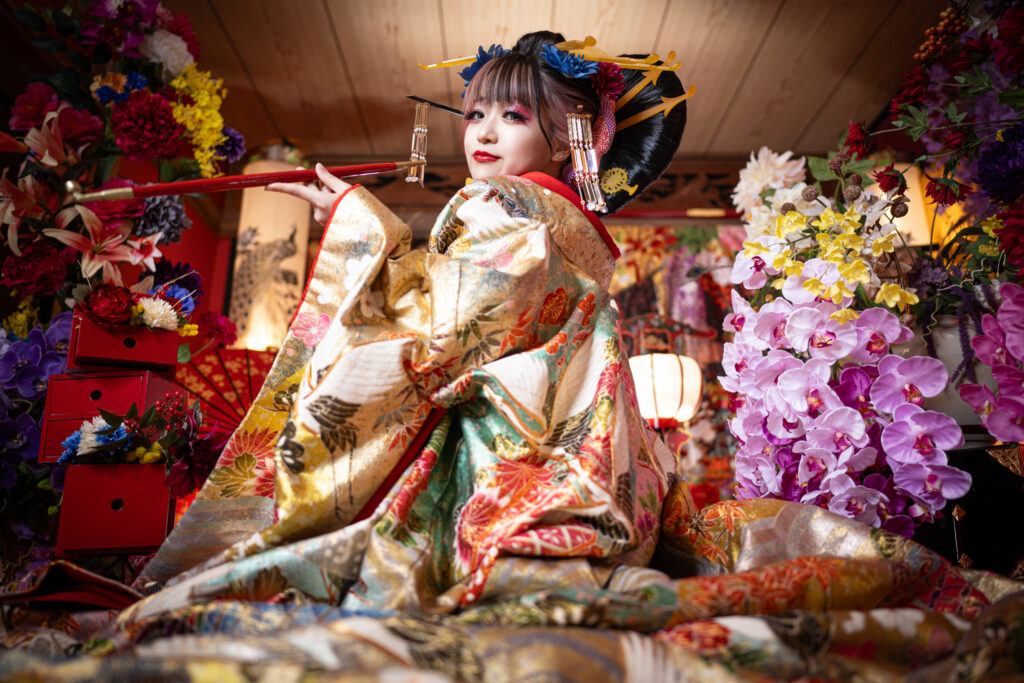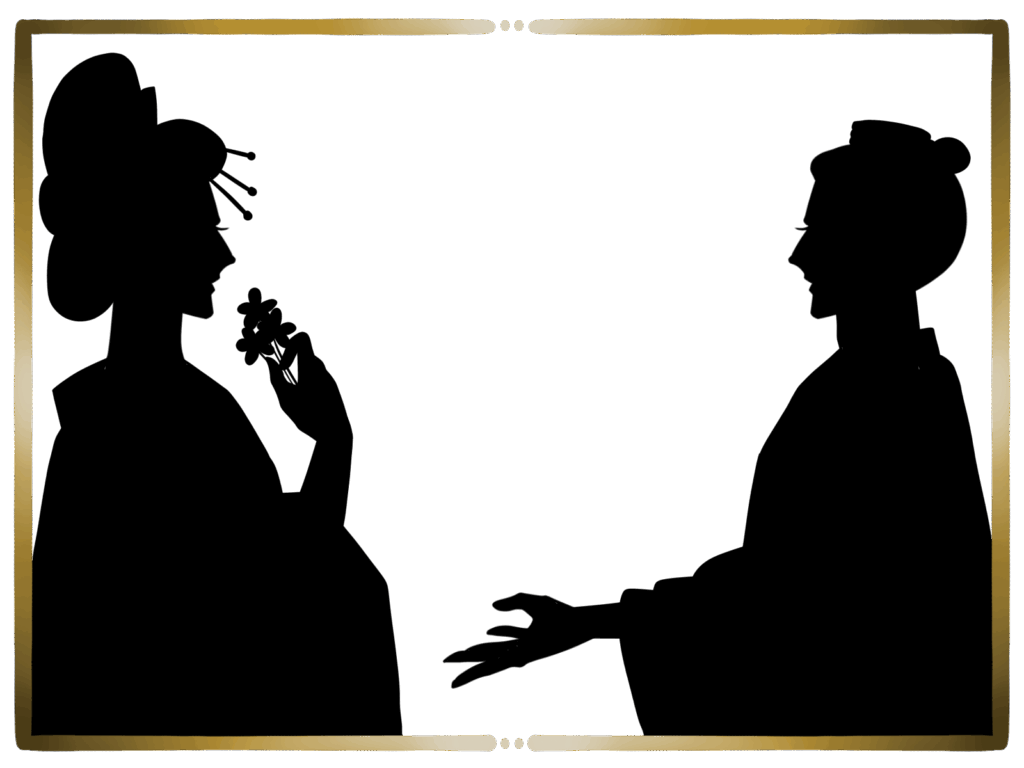Historic Yukaku in Japan: The Cultural Legacy of Oiran and Pleasure Quarters
2025.6.4

Capture Your Beauty in Stunning Oiran Style at Studio Yairo
If you’ve ever dreamed of experiencing the elegance of a traditional Oiran and preserving it in a timeless photo, Studio Yairo is the place for you.
Located in Chiba City, Studio Yairo specializes in authentic Oiran-style photography with careful preparation and professional shooting to bring out your unique charm. Our experienced and friendly staff will guide you every step of the way, so even first-time visitors can feel completely at ease.
You can explore the mood and quality of our photo sessions on our official Instagram. Feel free to take a look!
The studio is just a 1-minute walk from the nearest station, with convenient access. There’s also a nearby coin parking lot, so you’re welcome to come by car as well.
For questions or reservations, feel free to contact us via email. We look forward to welcoming you soon!
Exploring Japan’s Historic Yukaku Districts – A Cultural Legacy of Courtesans and Community
Introduction
Throughout Japanese history, “Yukaku” (licensed red-light districts) served as much more than areas of entertainment—they were vibrant cultural centers. These districts helped shape Japan’s traditions in art, fashion, music, and literature. From the refined world of Edo’s Yoshiwara to the cosmopolitan Maruyama in Nagasaki, Yukaku left an enduring legacy still echoed in modern Japanese aesthetics and culture.
What Is a Yukaku?
The term “Yukaku” refers to government-sanctioned pleasure quarters that began during the Edo period (1603–1868). These zones were designated spaces where sex work was legally permitted and regulated. However, Yukaku also evolved into sophisticated communities where skilled courtesans—known as yujo or oiran—offered not only physical companionship but also music, dance, poetry, and conversation to elite clientele. In many ways, Yukaku resembled social salons, filled with ritual, performance, and artistry.
Yoshiwara (Tokyo)
Perhaps the most famous Yukaku was Yoshiwara, established in 1617 on the outskirts of Edo (modern Tokyo). After a devastating fire, it was relocated to Asakusa and renamed “Shin-Yoshiwara.” The district was surrounded by walls, had strict entrance policies, and followed elaborate customs.
Oiran of Yoshiwara were highly trained in arts such as calligraphy, dance, and music. Their outfits were elaborate, featuring front-tied obi sashes and ornate kanzashi hairpins. Many were regarded as fashion icons, and their influence can be seen in modern kabuki and cosplay fashion.
Shimabara (Kyoto)
Kyoto’s Shimabara Yukaku developed a reputation for elegance and high culture. Established in 1640, it was located far from the Imperial Palace to maintain discretion. The courtesans here, particularly the tayū (highest rank), were considered artists as much as entertainers. They performed traditional music and recited classical poetry.
Today, some original buildings in Shimabara still stand, such as the historic Wachigaiya, and offer cultural tours that preserve the memory of Kyoto’s refined Yukaku culture.
Shinmachi (Osaka)
Osaka’s Shinmachi district was known for its vibrant, merchant-driven energy. Unlike Yoshiwara’s rigid formality, Shinmachi embraced Osaka’s cheerful, outgoing culture. Courtesans here were not just entertainers but storytellers, singers, and dancers. The emphasis was on engagement, humor, and wit.
Although most of the original buildings have disappeared, Shinmachi’s legacy lives on in Osaka’s performing arts and rakugo (comic storytelling) culture.
Maruyama (Nagasaki)
Maruyama in Nagasaki stood out due to its international clientele. Close to Dejima, the Dutch and Chinese trading post, it welcomed foreign visitors and even trained courtesans in basic foreign languages and customs. This unique blend made Maruyama a rare cosmopolitan Yukaku.
Here, women wore Western-influenced hairstyles, and the fusion of European and Japanese tastes could be seen in clothing and decor. Maruyama’s multicultural spirit reflected Nagasaki’s role as Japan’s only international port during the Edo period.
Other Notable Yukaku
In addition to the major centers, smaller Yukaku flourished across Japan:
- Kakumachi (Kanazawa): Supported by the wealthy Kaga Domain, Kakumachi developed into a high-class district known for refined arts and etiquette.
- Matsushima (Nagoya): A bustling Yukaku with a strong geisha presence, where the line between courtesan and artist was often blurred.
- Fukuro-machi (Hiroshima): Known for modern architecture and military clientele during the early 20th century.
- Uomachi (Kokura): Served steelworkers and traveling merchants along Kyushu’s trade routes.
Women’s Role in Yukaku
Many courtesans were sold into Yukaku due to poverty, but within these walls, some rose to fame and power. High-ranking courtesans became celebrities, influencing fashion trends and being sought after for their intellect and charm.
Despite the glamour, life in Yukaku was difficult. Courtesans worked under strict contracts, had limited freedom, and often suffered physical and emotional hardships. Still, many became poets, artists, and muses to writers and painters, leaving behind a cultural legacy that far exceeded the boundaries of the districts they lived in.
Post-War Decline and Cultural Preservation
After World War II, Yukaku were officially abolished. The 1958 Anti-Prostitution Law made sex work illegal, and most former red-light districts transitioned into ordinary residential or commercial zones. However, remnants of Yukaku architecture and culture remain in certain cities.
In places like Kanazawa and Kyoto, former tea houses and courtesan residences have been preserved as museums, restaurants, or cultural spaces. The art of Oiran and Geisha continues to be performed, particularly in festivals and tourism experiences, keeping the spirit of Yukaku alive in a modern context.
Conclusion
Yukaku were complex social institutions. While they were sites of restriction and exploitation, they also served as spaces of artistic innovation, female agency, and cultural preservation. Today, understanding Yukaku helps us reflect on gender, class, and the intricate interplay of pleasure and performance in Japanese history.
By studying these districts, we not only uncover a hidden part of Japan’s past but also celebrate the enduring power of art, ritual, and resilience born within their walls.

Capture Your Beauty in Stunning Oiran Style at Studio Yairo
If you’ve ever dreamed of experiencing the elegance of a traditional Oiran and preserving it in a timeless photo, Studio Yairo is the place for you.
Located in Chiba City, Studio Yairo specializes in authentic Oiran-style photography with careful preparation and professional shooting to bring out your unique charm. Our experienced and friendly staff will guide you every step of the way, so even first-time visitors can feel completely at ease.
You can explore the mood and quality of our photo sessions on our official Instagram. Feel free to take a look!
The studio is just a 1-minute walk from the nearest station, with convenient access. There’s also a nearby coin parking lot, so you’re welcome to come by car as well.
For questions or reservations, feel free to contact us via email. We look forward to welcoming you soon!
